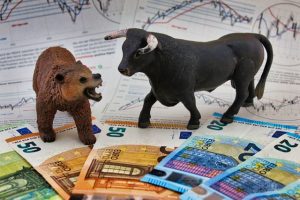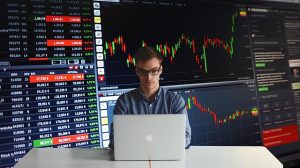気になる日米株価高騰 史上最高水準更新!今後のトランプ大統領の取り組みは? —
気になる日米株価高騰 史上最高水準更新!
— 今後のトランプ大統領の取り組みは? —

イメージ
2025年8月15日、日本の日経平均株価と
アメリカのダウ工業株30種平均(Dow Jones)がともに高騰し、市場は活況を呈している。
本稿執筆時点で、日経平均株価は43,378.31円まで上昇しており、
前日比では+729.05円(+1.71%)と大幅な上昇を見せている
一方、ダウ工業株平均も44,946.12ドルで小幅にプラス(+0.1%)となり、
取引中にはインデックスとして史上最高の45,203.52ドルの水準に
達したことが報じられている。
バブル崩壊前夜の記憶
私が初めてニューヨークに滞在した1990年代初頭、日本はバブル景気真っ只中。
株価も不動産も異常な高騰を続けていた。
けれどもアメリカのダウ平均は2,000ドル台後半から3,500ドル程度で、
「4,000ドルの壁」をなかなか越えられなかったことを覚えている。
当時はまさに、日本が世界の経済を牽引しているという誇りがあった。
しかし、その後の日本はバブル崩壊から続く長期の停滞期に突入。
一方で、アメリカではWindows95の発売(1995年)をきっかけに
ITバブルが勃興し、株式市場が再び活気づいていった。
 イメージ
イメージ
アメリカ経済の堅調さと波乱の歴史
アメリカはその後もITバブル崩壊や2008年のリーマンショックなど、
数々の危機を経験した。
しかし、FRBによる金融緩和政策と企業のイノベーションが追い風となり、
危機を克服し、むしろ成長を加速させてきた。
現在では、GAFAを筆頭とした巨大IT企業に続き、生成AIや再生可能エネルギー分野の
新技術が市場を牽引している。こうした構造変化の中、
ダウ平均も年初来で約6%の上昇を記録しているが、
S&P500やナスダックの上昇率(それぞれ約10%、12%)と比べるとやや控えめである。
日本株にも再び息吹
日本株は長らく低迷してきたものの、2024年以降、
ついにバブル期の水準を上回るようになった。
2025年8月15日時点での日経平均43,378円は、
実に2024年記録の高値をさらに塗り替えた格好であり、
輸出企業の業績回復や円安進行、コーポレートガバナンス改革などが後押ししている。
また、半導体や脱炭素技術といった分野での企業の存在感が高まり、
投資家の信頼を取り戻しつつあるのも顕著だ。
トランプ大統領の現政権と今後の政策
アメリカではトランプ大統領が再び政権についており、
減税・規制緩和などの景気刺激策が市場を後押ししている。
一方、半導体と鉄鋼に対する関税導入の発表などは、市場に不確実性ももたらしている。
こうした政策の見通しは、短期的には投資家心理を刺激するが、
中長期的には保護主義への懸念も残る状況だ。
歴史が伝える「株価の光と影」
株価上昇に熱狂する瞬間は、しばしば歴史の転換点となってきた。
日本のバブルやアメリカのITバブルはその典型だ。
現在の高値更新も、楽観だけでは済まぬ背景がある。
大切なのは、株価が上がっている理由を冷静に分析し、次の波を見極める視点を持つことだ。
 イメージ
イメージ
おわりに
2025年8月15日時点で、日経平均は43,378円、
**ダウ平均は44,946ドル(取引中に45,203ドルの高値)**と、いずれも高値圏にある。
これは確かに明るいニュースである。
しかし、歴史を振り返ると、株式市場の熱狂の裏には調整や反動が潜んでいる。
今後の市場の行方を左右するのは、トランプ政権の政策動向、FRBの金融政策メッセージ、
そして新技術の進展と地政学リスクだろう。
投資家に求められるのは、「いま上がっている」からではなく、
「なぜ上がっているのか」を見抜く眼力である。
私がかつて見た「ダウ3,500ドル」の景色から、
今また「43,000円/44,000ドル」という数字へ。
時代は移り変わっても、投資に必要な冷静さと洞察力は変わらない。
これからも目を離せない相場が続く。
 image
image
Surging Japanese and U.S. Stock Markets – Reaching Record Highs!
— What Are President Trump’s Next Moves? —
On August 15, 2025, both Japan’s Nikkei 225 and
the U.S. Dow Jones Industrial Average soared,
driving markets into a state of strong activity.
At the time of writing, the Nikkei 225 had risen to 43,378.31 yen,
marking a significant gain of +729.05 yen (+1.71%)
from the previous day (Nikkei Index).
Meanwhile, the Dow Jones Industrial Average stood at 44,946.12 dollars,
a modest increase of +0.1%,
and reports confirmed that during intraday trading
it had reached an all-time high of 45,203.52 dollars .
 image
image
Memories of the Pre-Bubble Collapse Era
When I first stayed in New York in the early 1990s,
Japan was at the peak of its bubble economy.
Stock prices and real estate values were soaring at an unsustainable pace.
Yet, I clearly remember the U.S. Dow Jones
lingering in the high 2,000s to around 3,500 points,
struggling to break through the “4,000 barrier.”
At the time, there was a strong sense of pride in Japan,
widely regarded as the driving force of the global economy.
However, Japan soon entered a prolonged stagnation
following the bubble collapse.
In contrast, the U.S. economy was revitalized by
the launch of Windows 95 in 1995,
which sparked the IT boom and brought new life to the stock market.
The Strength—and Turbulence—of the U.S. Economy
The U.S. economy has weathered numerous crises since then,
including the dot-com bubble burst and the 2008 Lehman Brothers financial crisis.
Yet, thanks to the Federal Reserve’s aggressive monetary easing and
the rapid pace of corporate innovation,
the U.S. not only overcame these challenges but accelerated its growth.
Today, in addition to the dominance of tech giants like GAFA,
emerging fields such as generative AI and
renewable energy are driving market momentum.
Against this backdrop, the Dow has risen about 6% year-to-date,
though this gain lags behind the S&P 500 and Nasdaq,
which are up roughly 10% and 12% respectively .
A Resurgence in Japanese Equities
Japanese equities, after years of stagnation,
finally surpassed their bubble-era highs in 2024.
As of August 15, 2025, the Nikkei at 43,378 yen represents yet another record,
surpassing its 2024 peak.
This rally has been fueled by strong performance among
export-oriented companies,
a weaker yen, and ongoing corporate governance reforms .
Moreover, Japanese companies are regaining investor confidence
through their growing presence in sectors such as semiconductors and
decarbonization technologies.
President Trump’s Current Administration and Policy Outlook
In the United States, President Trump has once again taken office,
with tax cuts and deregulation forming the backbone of his pro-growth agenda.
These measures have bolstered market sentiment.
However, his announcement of tariffs on semiconductors and
steel has also injected uncertainty into the market .
While such policies may stimulate investor optimism in the short term,
they also raise long-term concerns about protectionism and global trade tensions.
Lessons from History: The Light and Shadow of Stock Prices
Moments of euphoria in rising stock markets often coincide
with historical turning points.
Japan’s bubble and America’s IT bubble are prime examples.
The current surge to record highs, too,
comes with risks hidden behind the optimism.
What truly matters is not simply celebrating rising prices,
but carefully analyzing the reasons behind them—and preparing for the next wave.
 image
image
Conclusion
As of August 15, 2025, the Nikkei stands at 43,378 yen,
while the Dow is at 44,946 dollars (with an intraday peak of 45,203 dollars)—
both firmly in record territory.
While this is undoubtedly encouraging news,
history reminds us that behind every market boom lies
the possibility of correction or reversal.
The future trajectory of markets will be shaped by
the Trump administration’s policy decisions,
the Federal Reserve’s monetary signals, technological breakthroughs,
and ongoing geopolitical risks.
For investors, the essential skill is not simply recognizing that “prices are rising,”
but discerning why they are rising.
From the days when I once saw the Dow at 3,500 points
to today’s figures of “43,000 yen / 44,000 dollars,”
the numbers may have changed dramatically,
but the need for calm judgment and keen insight in investing
remains unchanged.
The coming months promise to be just as compelling.

